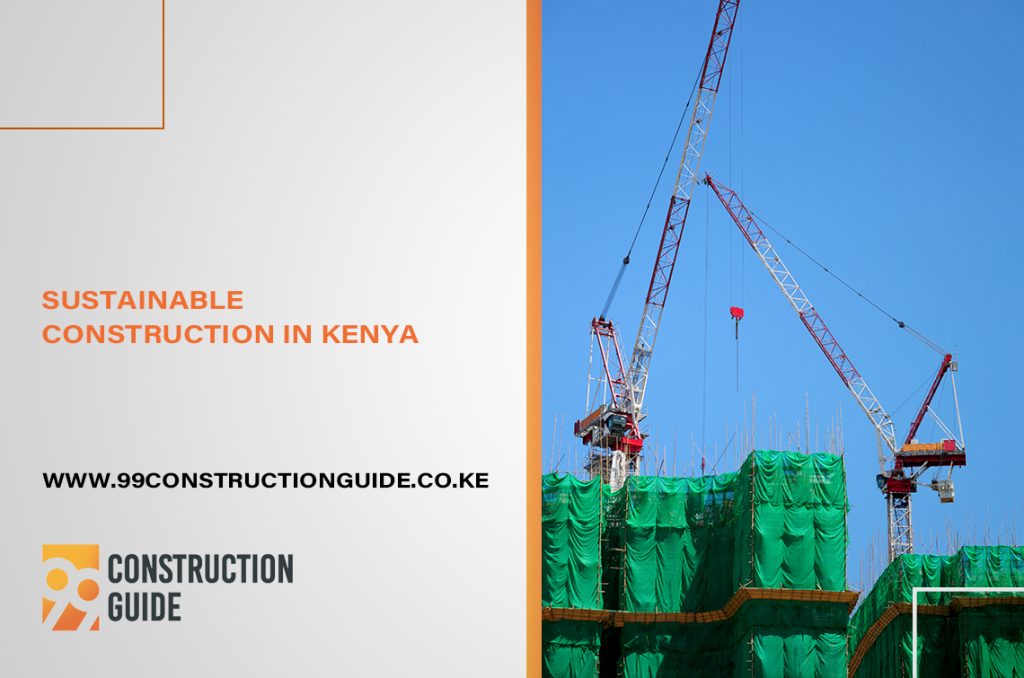Sustainable construction seeks to minimize the adverse environmental effects of building structures through the efficient use of materials and methods. building owners are now faced with demands to upgrade and construct buildings while minimizing their carbon footprint and environmental impact. sustainable construction in Kenya building not only reduces operational costs but it also increases the building’s overall resilience.
 Why is sustainable construction important?
Why is sustainable construction important?
The planet has a finite number of natural resources and the rise in construction developments and the need for new habitats has seen natural resources being squandered and the planet being unable to match the fast pace of modernization. The construction process is not the only one having an impact on the environment but also the majority of a building’s carbon footprint is from the energy used in buildings for example during heating making homes a significant contributor. transitioning to sustainable construction brings about a number of benefits, not only environmental but also economic and social.

Principles of sustainable construction in Kenya
The principles of sustainable construction are methods contributing to a greener built environment while reducing the overall carbon footprint. These principles include:
-
Sustainable design
The early planning and design of a building have a major impact on reducing energy use and pollution. The earlier you involve sustainable construction in your design the more sustainable you are able to build ultimately leading to long-term environmentally friendly benefits.
-
Durability
We can be able to see the durability of the construction materials used through the age of buildings. Using durable materials to construct buildings means there will not be the need for frequent repair and replacement, therefore, resulting in less maintenance. The environmental and economical benefits of having durable buildings are positive.
-
Waste reduction
Demolition has an adverse impact on the amount of waste produced. When buildings are built to be more reusable and adaptable, there would be a lesser need for demolition and removal. Use low-impact materials that are sustainably sourced and reused from other projects to reduce waste at your building site.
-
Water conservation
With pollution and climate change having a huge impact on freshwater supplies water is becoming an increasingly precious resource. The need to manage water has been acknowledged and measures to begin sustainable water design throughout the building process are being undertaken.
-
Energy efficiency
Increasing energy efficiency enables you to lower your contribution to climate change by reducing the emission of CO2 through lowering fuel consumption. There are a variety of energy-efficient building materials to choose from ranging from insulated concrete forms to insulated panels and much more. Switching to eco-friendly energy technologies converts natural sources to services such as lighting and heat.
-
Indoor air quality
: Bad air quality caused by indoor pollution releasing harmful particles can have a negative impact on the health and indoor environments of occupants. This is caused by inadequate construction such as limited ventilation increasing indoor pollutant levels, use of heating systems that minimize exposure to particles, and ensuring permanent effective ventilation to improve your indoor air quality.
-
Sustainable building materials
Sustainable construction should seek to construct a building that can use and reuse materials in the most efficient and sustainable way during its entire lifecycle. Sustainable building materials have been credited with the reduction of adverse effects like global warming and depletion of natural resources while reducing construction waste.

Wrap up
Sustainability is the future of the construction industry. Building owners are often faced with the challenge of having safe and healthy buildings with minimal environmental impact. Choosing sustainable building design in Kenya can help reduce operational costs and carbon footprints as well as increase the resiliency of the buildings.


